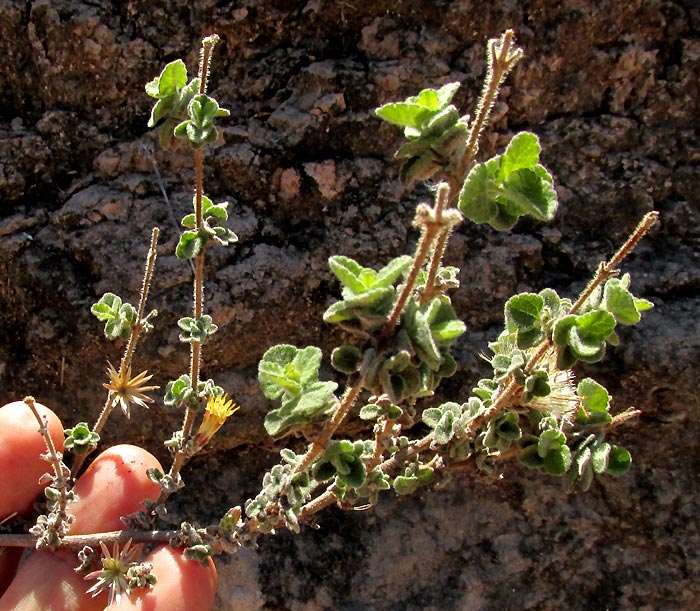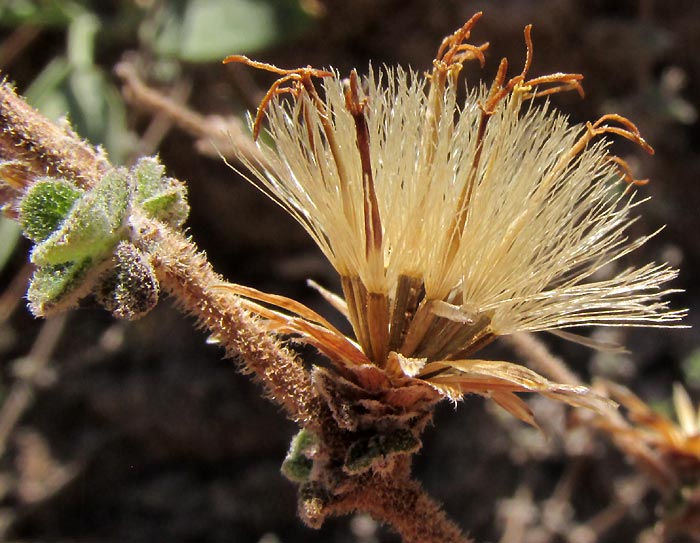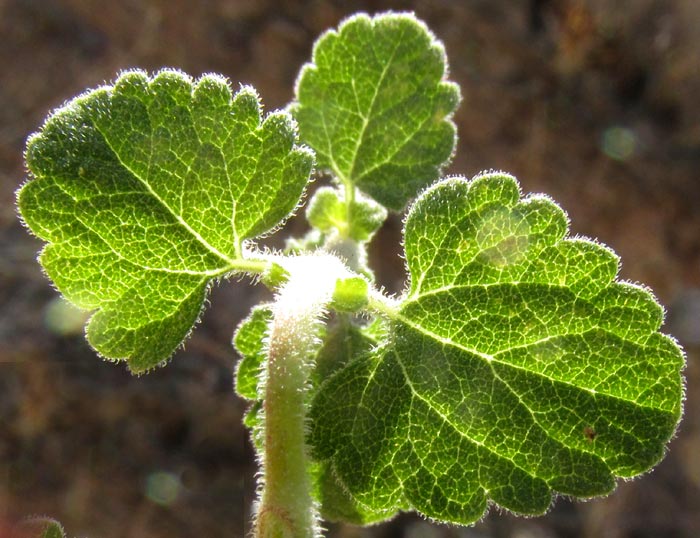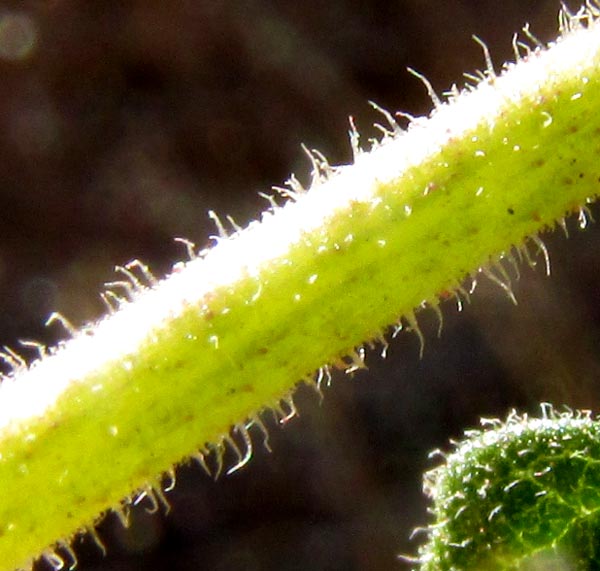Excerpts from Jim Conrad's
Naturalist Newsletter
entry dated March 24, 2022, issued from near Tequisquiapan, elevation about 1,900m (6200 ft), ~N20.57°, ~ W99.89°, Querétaro state, MÉXICO Now as the dry season turns the landscape gray-brown and parched brittle, the above branch bears new leaves, and flowering and fruiting heads in various stages of development. The branch belongs to a woody, densely branching bush about 50cm (1.5ft) tall, emerging from the seam of a vertical wall of a mixture of semi-solidified volcanic ash mixed with outwash from nearby hills largely composed of rhyolite and basalt. The wall is manmade, but long abandoned, facing west. Here's what the plant looks like emerging from its wall: The flowering heads consist of clusters of disc florets, leading us to the Eupatorium Tribe of the Composite or Aster Family, as shown below: On the same plant, fruiting heads are releasing cypsela-type fruits into the wind, or having them simply fall off all at once at the merest jolt, shown below: The leaves are distinctive, and produce a minty/musky odor and sticky feeling on the fingers when crushed. Newly emerged stems are stiffly hairy . The Eupatorium Tribe of the Composite or Aster Family isn't finished for the Flora del Bajíp, which otherwise would have helped identify this plant. However, guessing that in the Flora of North America it might be possible to "key out" the genus, starting with the tribe Eupatorieae, the genus Brickellia came up. A quick Internet search revealed a fair number of Brickellia species listed for Mexico. An image search on the keywords "Brickellia Mexico" yielded hundreds of pictures, of which the most commonly represented species with roundish, scalloped, or "crenate," leaves positioned opposite one another on narrow, stiff stems, was one labeled Peistó, BRICKELLIA VERONICIFOLIA. Because of the unusual, seemingly ecologically harsh environment, one might hope for a rare species narrowly adapted to a specific, uncommon habitat. However, Peistó turns out to be common enough to have numerous commonly used Spanish names, not only Peistó but also Estrellita (Little Star), Hierba del Perro (Dog Herb), Orégano de Campo Field Oregano, Orégano de Cerro (Hill Oregano), Orégano de Monte (Scrub Oregano), and others. Later a dense knee-high bush of Peistó was found in a weedy fencerow. Peistó has been used traditionally for treating diabetes. A 1998 paper by Rosa Pérez-Gutiérrez and others found that chloroform extracts from Brickellia veronicifolia injected into the peritoneal cavities of diabetic mice decreased blood glucose levels by 72%. They write, "The hypoglycemic effect of these plant extracts used in traditional medicine for diabetes treatment is confirmed."
PEISTÓ FLOWERING





